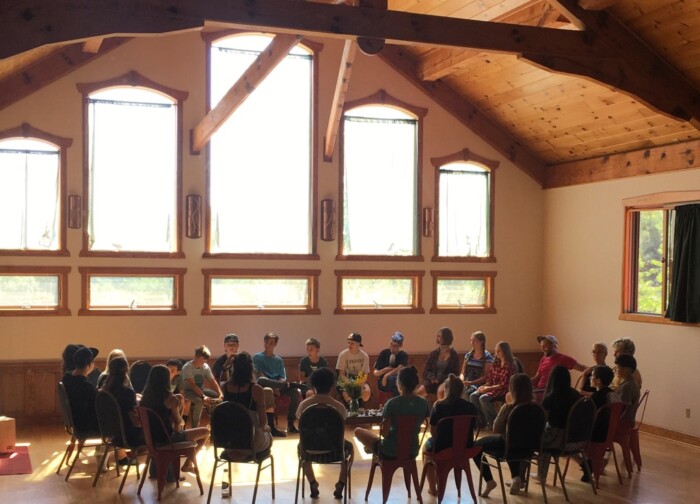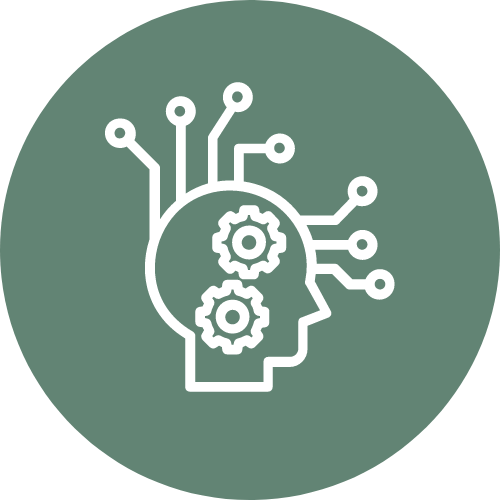Key Takeaways
- New learning models enable powerful learning and agency for the students, while also enabling new forms of leadership and empowering educators to prototype new learning experiences alongside students.
- While starting a new learning model can appear to have a small impact, oftentimes they are the start for larger district transformation.
Vision
Learning experiences are co-authored with students and are nimble and malleable to how individuals learn and what individuals want to learn about. These models are centered around personalized and competency-based learning, social-emotional learning and skill credentialing, New Learning Models link experiences to create new and emerging school architectures.
Overview
An innovation pathway is a systematic approach to continuous improvement that prioritizes creativity, experimentation, and collaboration. It is a framework that provides a structured process for identifying, developing, and implementing new ideas and practices to meet the evolving needs of students and the community. By fostering a culture of innovation and experimentation, districts can create a learning environment that is responsive to student needs, engages all stakeholders, and prepares students for success
These pathways can be implemented in two ways. One is more of a physical presence and often manifests as a school within a school or a separated learning experience; we often call these microschools. These innovation pathways may also manifest as a more virtual, personalized offering that is scaffolded around an individual; we’ll call this a personalized learning pathway.
Microschools
Microschools are nimble learning environments that typically have fewer than 150 students. Often, they operate independently from traditional district schools. These models also experiment with new teaching and learning methods, allow for distributed change leadership roles across the organization, incorporate emerging technologies, and tailor their programs to meet the needs of their students.
By incorporating unique themes, links to the community, and open spaces, microschools can ignite a passion for learning in students while promoting innovation for districts. These schools embrace the size limitation and maintain small class sizes to provide powerful and sustained teacher-student relationships. Often, these schools rely on multi-age groupings, which promote collaboration and peer mentoring among students of different ages.
Microschools are typically located within the communities they serve, which fosters strong partnerships between schools and families. This community-based approach can lead to increased parent involvement, stronger relationships between students and teachers, and a greater sense of belonging for students.
When Microschools are developed within existing schools, they can be used to jumpstart and scale innovative practices across the larger learning system. The size enables a shorter feedback loop from idea to iteration, allowing teachers and students to experiment more frequently with lower stakes. Additionally, microschools often require a thinner layer of administration, giving teachers more room to lead both inside and outside of their classrooms. By maintaining a small scale, teacher-leaders can make day-to-day decisions that respond to the needs of the children, as well as school-wide decisions that reflect their vision in the context of the needs of children, families, and themselves.
As a school leader, launching a microschool can provide two significant benefits. Firstly, it presents an opportunity to create an innovative and valuable learning option for students who may not be well-served by traditional schools. This can include preschool, dropout recovery programs, or career education options. Additionally, microschools can leverage community assets, such as parks, museums, businesses, or colleges, to offer a unique learning experience.
Below are a few of the core steps toward designing a microschool:
- Define the vision. Districts should begin by defining their vision for innovation and personalized learning, and aligning it with their broader education goals. This vision should be inclusive and involve all stakeholders, including students, teachers, parents, and community members.
- Develop a plan. Districts should develop a comprehensive plan for implementing microschools as part of their innovation pathway. This plan should include a timeline, budget, and clear goals and objectives.
- Build partnerships: Districts should build partnerships with organizations that have experience with microschools, such as nonprofit organizations, universities, and education technology companies. These partnerships can provide districts with the expertise and resources they need to implement microschools effectively.
- Engage the community. Districts should engage the community in the development and implementation of microschools. This can involve outreach to parents, students, and community members, as well as forming advisory committees to provide feedback and support.
- Evaluate and adapt. Districts should regularly evaluate the impact of microschools on student outcomes and adapt their approach as needed. This can involve collecting and analyzing data, soliciting stakeholder feedback, and adjusting programs and strategies as necessary.
Personalized Learning Pathway
A personalized learning pathway starts with support and guidance, also known as advisory. There are several ways in which advisory systems can be improved to provide better support for students. Start early by helping elementary school students discover their strengths and interests and introducing them to possible future careers through career awareness units that help students reflect on their strengths, interests, and values.
Sustained advisory relationships should be informed by a comprehensive learner profile, combining insights drawn from achievement levels and growth rates, interests and motivational factors, and context variables.
Using a comprehensive learner profile that combines insights drawn from achievement levels, interests, motivational factors, and context variables will also improve and personalize postsecondary guidance. An intentional design of advisory can support learners to create well-informed postsecondary plans by identifying interests and strengths, exploring career areas and global goals, developing a comprehensive career pathway plan, and gaining work experience through job shadows, internships, and apprenticeships.
These personalized learning pathways will be shaped and improved through dynamic uses of artificial intelligence which will map onto interests, goals, and possible paths. These tools will also help learners co-author projects based on needs in the community and local client-connected projects. The real-time guidance and scaffolding will serve as tailored and superpowered guides toward possible futures.








